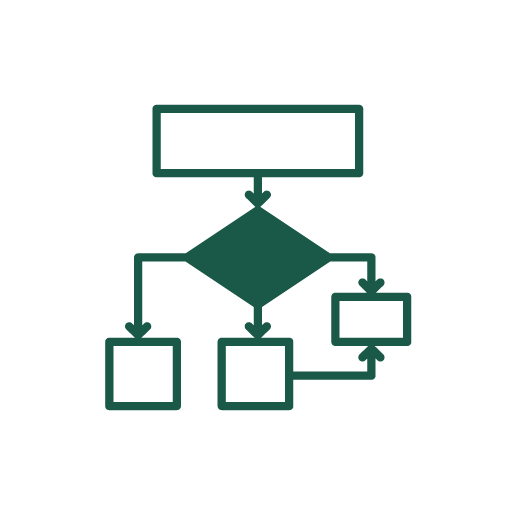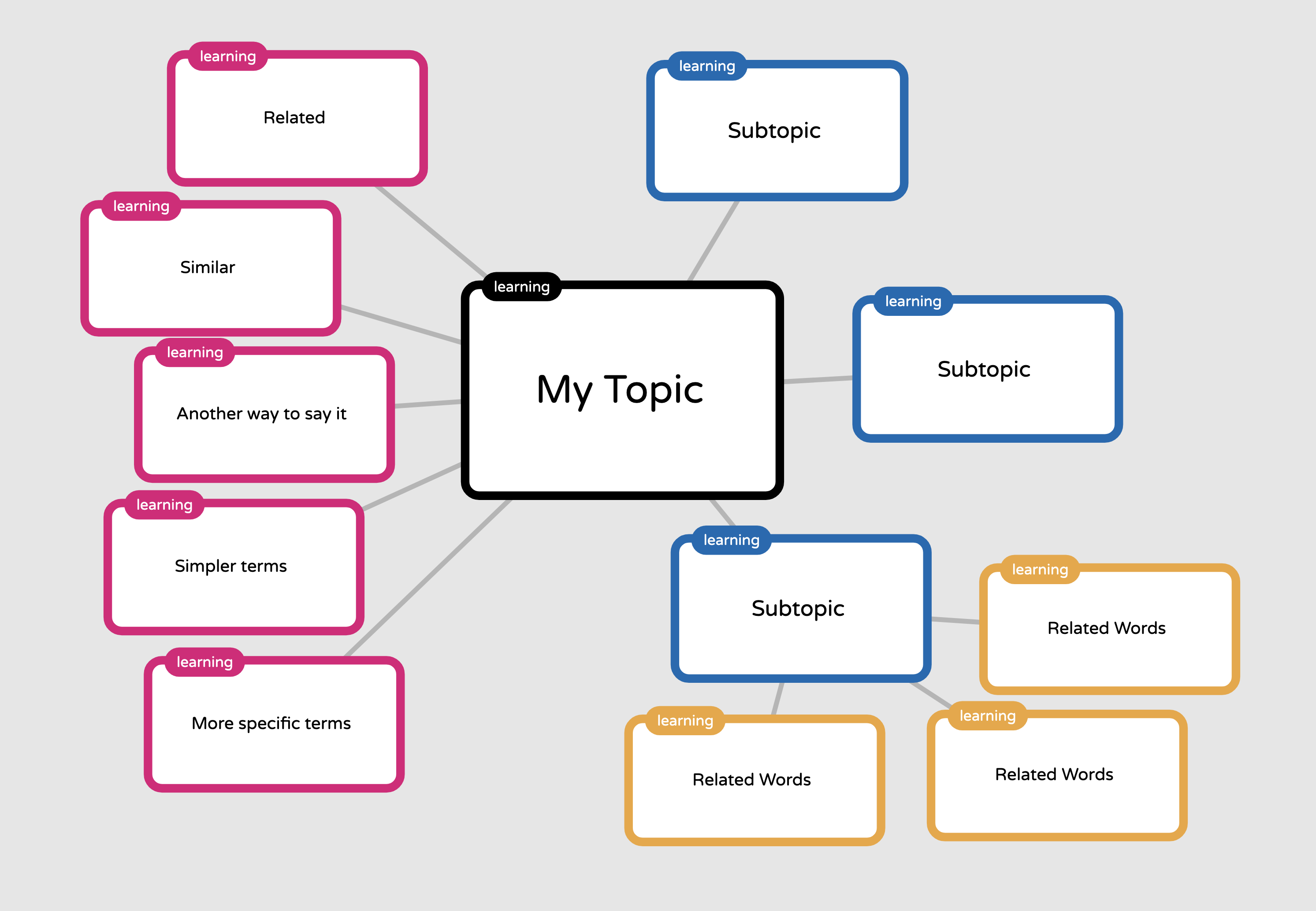Prepare to Search
1 Develop Your Topic
 Before searching for information, you’ll need to have a topic, whether it has been assigned to you or you’ve developed it on your own. To focus on the most relevant information, it’s helpful to put your topic in the form of a question (we sometimes call this a research question). In this chapter, you’ll discover how to choose a topic for your assignment and turn that topic into a specific question.
Before searching for information, you’ll need to have a topic, whether it has been assigned to you or you’ve developed it on your own. To focus on the most relevant information, it’s helpful to put your topic in the form of a question (we sometimes call this a research question). In this chapter, you’ll discover how to choose a topic for your assignment and turn that topic into a specific question.
Tips
Before you begin the chapter, take a look at these top tips for developing a topic.
- Start with the assignment.
 Take a look at your assignment. Does it provide you with topic options, or can you select your own?
Take a look at your assignment. Does it provide you with topic options, or can you select your own? - Don’t go too broad or too narrow.
 Do some background searching, and identify a topic angle. Keep in mind: if you are getting too many results, your topic may be too broad. If you are not getting enough results, your topic may be too narrow.
Do some background searching, and identify a topic angle. Keep in mind: if you are getting too many results, your topic may be too broad. If you are not getting enough results, your topic may be too narrow. - Put your topic in the form of a question.
 Putting your topic in the form of a question will help you pinpoint the specific aspect of the topic you’re most interested in.
Putting your topic in the form of a question will help you pinpoint the specific aspect of the topic you’re most interested in. - Refine your question using PICO or concept mapping.
 PICO is great for quantitative clinical topics. Concept mapping is good for qualitative or non-clinical topics.
PICO is great for quantitative clinical topics. Concept mapping is good for qualitative or non-clinical topics.
Important Terms Used in this Chapter
Introduction to the Process
When you develop your topic, you don’t have to come up with the perfect topic all at once. There is a process that you can follow to refine your topic to be specific and relevant. This will ultimately help you when you search as you will have a clearer idea of what you are looking for.
In this chapter, you will discover the following steps in the process for developing your topic:
- Begin by selecting a topic.
- Turn your topic into a question.
- Refine that question using the following techniques:
- PICO
- Concept mapping
Watch the video below for an overview of this process. You can also read the How to Develop Your Topic Video Transcript.
Selecting a topic
Although finding a good topic may initially feel like looking for a needle in a haystack, choosing a general topic is the first step. To select a topic, start by thinking about aspects of your field or discipline that might be interesting to pursue, such as ‘science education’ or ‘diabetes treatment.’ Do some background reading to understand more about the topic.
You can use Wikipedia to get a general orientation to a subject you want to investigate further, but do not use it as a source in your final paper, as it is editable by the public. You can try a test search of your library’s resources to see what kind of results you get. If the topic is too general, you may need to narrow it down; if it is too specific, you may need to expand your search.
The following strategies can help you choose a topic:
- Start with the assignment. Take a look at your assignment. Does it provide you with topic options, or can you select your own?
- Look at topics that are relevant to you. For example, pick an area of interest, an area of experience, or an area where you know there is a need for more research.
- Start with “what” and “why” questions and expand. For example: what is current research on eating disorders, and why is it significant to nursing and health sciences?
- Think about a current problem in the workplace. Consider a current issue in a clinical or hospital setting, such as hand washing or patient falls.
- Ask a professor. Consult a professor about possible topics for your assignment.
- Don’t go too broad or too narrow. Do some background searching, and identify a topic angle. Keep in mind: if you are getting too many results, your topic may be too broad. If you are not getting enough results, your topic may be too narrow.
It’s a good idea to avoid subjects that are too personal or emotional, as these can interfere with an unbiased approach to the research; however, it’s also important to make sure you have more than a passing interest in the topic. You will be with this topic for an extended period, and it won’t be easy to stick with it even under the best circumstances.
Putting your topic in the form of a question
Once you have decided on a topic, take that idea and think about it as a question. What do you want to know about the topic? Putting your topic in the form of a question will help you pinpoint the specific aspect of the topic you’re most interested in. You may want to write out a few questions and then choose the one that is most relevant to what you have in mind.
The form below contains some examples that can help you formulate your own question and further refine your assignment’s topic. Use the form below to formulate your own questions, or download a Word document version of the form.
Refining Your Question
Once you have an initial question, you will want to do a review of the existing literature to see what resources on your topic or question already exist. Based on what you find, you may decide to alter your question in some way before going too far along a path that perhaps has already been well-covered by other scholars.
In the next tabs, you will discover two strategies (PICO and concept mapping) that you can use to refine your question even further. This will help you ensure you have a useful question that will guide your search. Decide which method to use by considering the following information:
- PICO is great for quantitative clinical topics.
- Concept mapping is good for qualitative or non-clinical topics.
If you’re not sure, try PICO first, and if you find the PICO questions don’t fit with your topic, then try concept mapping instead.
Using PICO to Refine Your Question
PICO is a technique that you can use to formulate and refine your questions. Watch the video and read the information below to learn more about PICO. You can also read the How to Use PICO to Refine Your Topic Question Video Transcript.
PICO stands for (P)Patient, population, or problem, (I) Intervention or exposure, (C) Comparison, and (O) Outcome. To use PICO, answer questions about each of these elements. Formulating an answerable question using the PICO model could look something like this:
- Patient, Population or Problem: What are the characteristics of the patient or population? For example, gender, age, other demographics. What is the situation or disease you are interested in? For example, diabetes management.
- Intervention or exposure: What do you want to do with the patient, person, or population (e.g. treat, diagnose, observe)? For example, reaction to a specific type of treatment.
- Comparison: What is the alternative to the intervention (e.g. placebo, different drug, surgery)? For example, how does a sample group that receives a drug compare to a similar group that is given a placebo?
- Outcome: What are the relevant outcomes (e.g. morbidity, death, complications)? For example, how do lower cholesterol numbers impact the target population?
Here are some examples of how the PICO method is used to refine a topic:
- “What is the effect of a dressing with silver in its composition on the treatment of diabetic foot ulcers?” – Population (patients with diabetes) / Intervention (dressings made with silver).
- “How effective are anti-depressive medications on anxiety and depression?” – Intervention (antidepressants) / Population (patients with anxiety and depression).
Using PICO(T) Templates
Sometimes it can be helpful to add an additional element to PICO. When you include the Timeframe of the topic, this is called PICO(T). When you add the timeframe as an additional element, you have to ask, “over what period of time?” The examples below show how this technique can be applied in different situations.
Therapy
In [P]______, do/does [I] ______ result in [O] _______ when compared with [C] ______ over [T] _______?
E.g. In nursing home residents with osteoporosis, do hip protectors result in fewer injuries from slips, trips, and falls when compared with standard osteoporosis drug therapy over the course of their stay?
Etiology
Are [P] ______ with [I] ______ over [T] ________ more likely to [O] _______ when compared with [C] ______?E.g. Are female non-smokers with daily exposure to second-hand smoke over a period of ten years or greater more likely to develop breast cancer when compared with female non-smokers without daily exposure to second-hand smoke?
Diagnosis
Is/are [I] ______ performed on [P] ______ more effective than [C] ______ over [T] _______ in [O] _______?
E.g. Are self-reporting interviews and parent reports performed on children aged 5-10 more effective than parent reports alone over a four-week consultation process in diagnosing depression?
Prevention
In [P] ______, do/does [I] ______ result in [O] _______ when compared with [C] ______ over [T] _______?
E.g. In emergency room visitors, do hand sanitizing stations result in fewer in-hospital infections when compared with no hand sanitizing stations over a year-long pilot period?
Prognosis
Do/does [I] ______ performed on [P] ______ lead to [O]______ over [T] _______ compared with [C] _______?
E.g. Do regular text message reminders performed on patients recently diagnosed with diabetes lead to a lower occurrence of forgotten insulin doses over the first six months of treatment compared with no reminders?
Test Your Knowledge Activity: Developing a Topic
Using Concept Mapping
A concept map or mind map is a technique where you connect your topic to related words. It may help you analyze your question and determine more precisely what you want to search. Watch the video to see a basic demonstration of this technique, and read the instructions below for more information. You can also read the How to Use Concept Mapping Video Transcript.
Here’s how to create a concept map of your topic:
- Write down the broad topic, issue, or problem.
- Around the broad topic, write down all the relevant words, phrases and ideas related to that topic that come to mind.
- Draw lines between the new word and the topic to map them to the original idea. These words are like subtopics.
- Expand your map further by writing down words connected to your subtopics and connecting them in the same way.
- Review your map to re-examine your initial topic question. Look at the subtopics and their connections to see if there are ways you can make your question more precise.
Example:

This mapping technique aims to improve the depth and clarity of your question. Like the other methods of question refining, its purpose is to help you organize, prioritize, and integrate material into a workable research area, one that is interesting, answerable, realistic in terms of resource availability and time management, objective, scholarly, original, and clear.
Concept Mapping Tools
- For attributions, please see the Attributions page in the table of contents. ↵
A research question is a topic that is put into the form of a specific, answerable question.
PICO is a series of questions that help you create a strong topic. PICO stands for Patient/Population/Problem, Intervention/Exposure, Comparison, and Outcome.
A concept map is a diagram visually representing the relationships among concepts. It is an alternative method to PICO for narrowing down your topic question. Concept mapping involves developing a concept map or mind map around your topic.
Source: concept map from Wiktionary is licensed under CC BY-SA. A derivative of the original work.

